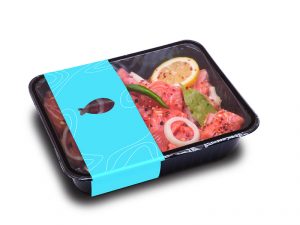 Proper packaging is a vital part of every perishable food’s distribution journey from a farmer’s field to a child’s lunchbox. Appropriate packaging of fresh fruits and vegetables:
Proper packaging is a vital part of every perishable food’s distribution journey from a farmer’s field to a child’s lunchbox. Appropriate packaging of fresh fruits and vegetables:
- Helps ensure the safety of produce. Proper packaging of fruits and vegetables protects the food from viruses, bacteria and other contamination that can occur through improper handling. The five most prevalent germs that cause illnesses from food in the U.S. are norovirus, salmonella, clostridium perfringens, campylobacter and staphylococcus aureus. It is estimated that 48 million people become ill from foodborne illnesses each year, with 128,000 people hospitalized and 3,000 losing their lives. Children, the elderly, pregnant women and individuals with compromised immune systems are most at risk.
- Protects the food from physical damage. Produce is fragile, and the journeys traveled by fresh-picked fruits and vegetables are long, arduous ones that can involve turbulent transportation on trucks, trains, planes and ships. Wooden crates, sturdy cardboard boxes and custom product padding provide cushioning and protection of these perishable contents from external forces during shipment. In addition, the controlled atmospheres created by proper produce packaging protect temperature-sensitive produce from extremes in heat and cold, especially when vegetables and fruits travel from hot climates to frigid ones.
- Maintains the products’ freshness. The need for produce to retain their freshness throughout their travels and during downtime spent waiting for handlers on loading docks is imperative. Fresh produce packaging protects the integrity of the products’ form and flavor. If the produce arrives to retail outlets appearing damaged or rotten, it will not be purchased, and all the expenses involved in picking, packing and shipping will have been wasted.
Produce Packaging Options
Alternatives in fresh produce packaging supplies provide options to everyone involved in fruit and vegetable distribution. Here are several of the many choices for fresh food packaging:
- Corrugated fiberboard: Versatile corrugated fiberboard can be manufactured in many weights, styles and configurations. That, combined with its affordability and recyclability, makes it a popular choice for boxing and shipping produce.
- Mesh bags: Oranges, potatoes and onions are often packaged in mesh bags. The mesh material allows uninhibited air flow, is usually affordable and displays well in retail establishments.
- Pallet bins and boxes: Oversized cardboard, wooden or plastic pallet bins are mainly used during harvesting to move produce from the orchard or farm field to the packing houses. However, some supermarkets sell locally sourced produce, such as sweetcorn or pumpkins, in their stores directly from the bins.
- Pulp containers: Recycled paper pulp combined with a starch binder can form biodegradable boxes for blueberries and raspberries. These containers are highly suitable for berries and small fruit because they absorb surface moisture.
- Custom paperboard packaging: As plastic clamshell packaging continues to fall out of favor with eco-conscious consumers, food packagers are turning to custom boxes that can be folded by the consumer in the store and then filled with bulk berries and small vegetables. Consumers like the ability to purchase only the amount they need and the recyclability of the cardboard. Distributers like the printability of the paperboard packaging.
PacMoore Is Your Partner in Food Distribution
Our array of adaptable food-packaging capabilities enables us to tailor packaging to your company’s unique requirements, including container durability, package recyclability and supply chain efficiencies.
Our liquid and food packaging solutions and their available sizes include:
- Bag in box (min: 5 lbs., max: 55 lbs.)
- Barrel — Fiber or plastic barrels available; lids and sealed interior poly bag included (min: 50 lbs., max: 300 lbs.)
- Bulk bag — Nylon exterior with moisture barrier interior options (min: 400 lbs., max: 3000 lbs.)
- Direct fill carton (min: 3 ¾ x ½ x 3 1 ¾, max: 14 x 6 x 12)
- Gaylord box (min: 400 lbs., max: 3000 lbs.)
- Horizontal form fill & seal pouch (min: 3 x 3, max: 8 ¾ x 9 ½)
- Master shipper (Sizes can be customized to your unique needs. Contact us for more information.)
- Multiwall dairy bag (min: 15 lbs., max: 100 lbs.)
- Multiwall open mouth bag (min: 15 lbs., max: 100 lbs.)
- Multiwall valve bag (min: 15 lbs., max: 100 lbs.)
- Pallet-sized bulk bin — Same as a Gaylord box (min: 400 lbs., max: 3000 lbs.)
- Pouch in carton (min: 3 ¾ x ½ x 1 ¾, max: 10 ¾ x 4 ¾ x 8)
- Vertical form fill & seal pouch (min: 2 1/8 x 3, max: 12 x 16 and up)
- Bulk trucks and bulk railcars available
Let us know how our high-tech food packaging solutions can make your food manufacturing and distribution business even better.